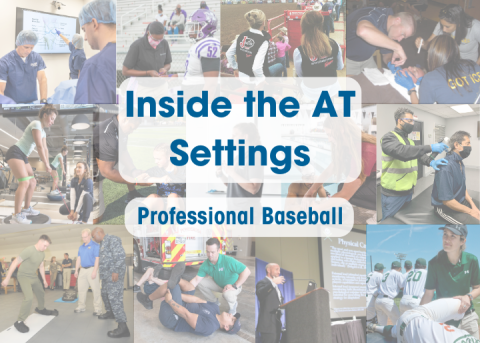
Introduced in the April NATA News, this NATA Now article series provides insight into the different athletic training settings as well as information athletic training students and interested ATs need to know. The series also provides tips from members on how to succeed in each setting.
After eight years working in professional hockey, Nick Kenney, ATC, CSCS, transitioned to professional baseball and has spent the last 22 years working as an assistant athletic trainer, head athletic trainer and, now, director.
“I transitioned into director of medical administration and medical services position with the Kansas City Royals due to increased administration duties and experience gained during my time as head athletic trainer,” he said. “The purpose of position is to continue to oversee all sports medicine operations in Major Leagues and Minor Leagues within the organization to support [athletic trainers] to increase efficiency and ability to remain the clinicians needed to be successful athletic trainers.”
Below, Kenney shares insight into the professional baseball setting.
Typical Makeup of Your Population
Predominately male
Non-AT-Related Skills/Education/Certification Required or Helpful for Your Setting
- Leadership courses
- Medical Spanish
- Certified Strength and Conditioning Specialists certification
Common Injuries Observed or Encountered in Your Setting
- Rotator cuff strain
- Labral tears
- Ulnar collateral ligament sprains
- Hamstring strains
Traits of a Successful AT in Your Setting
ATs in this setting need good communication skills, a good work ethic, accessibility, flexibility, empathy, patience and a caring heart.
Misconceptions About Your Setting and/or Patient Population
Everyone thinks that because we work in professional sports, we make a lot of money and everything is glamorous. We work extremely long hours and travel a lot. This keeps us from family and can be taxing on outside relationships.





